“Posing” has come to be something of a dirty word in the present age, synonymous with “fake” and “structured” and all things dull and lifeless. Posing sucks the energy right out of a photoshoot—or so we tend to think. However, for photographer Jerry Ghionis, who is regarded as one of the best wedding photographers in the world, posing is critical to the success of any portrait.
“There is no problem with posing. [The problem is] people’s perception of what it is,” Ghionis said. “Once you master it, I believe it’s like a fine art. There is a science behind posing and I will prove that to you today.”
In this lecture, Ghionis demonstrates posing techniques and shares insight into why posing is so important, what to do in difficult posing situations, and how to subtly pose clients who don’t want direction without driving them away:
Ghinois became sick of waiting for the perfect moment early in his career, and so he set out to discover how to create those moments through posing. Along the way, he discovered that most poses look fake because they are fake and that the key to masterful posing direction is connecting with a client’s emotions to create that “spark” that makes the client feel alive.
“A pose without emotion is only a pose,” Ghionis said. “You add emotion to a pose and you are now photographing a beautiful moment… if you can combine that beautiful art of posing with emotion, then that is unbeatable. There’s not many people who know how to do that very very well consistently.”
While the process is necessarily different for every client, Ghionis has developed the following general formulas for how to pose brides, grooms, couples, families, and bridal parties:
Posing Brides / Women
Posing a woman is all about making her look and feel beautiful. Even if a bride is resistant to posing, saying something like, “As beautiful as you are, I can make you shine brighter than ever before with a simple direction. Would you like that?” can help the bride to trust your judgment.
1. Be confident. Trust is key and you’ll earn hers by knowing what you’re doing and acting like it. Amateurish timidity will cause the bride to become anxious that she’s made a mistake in choosing you as the photographer of her special day—and that will come out in the photos.
2. Lead her with the mirroring technique. Instead of issuing commands that the bride may have no idea how to follow, show her what you want her to do by doing it first.
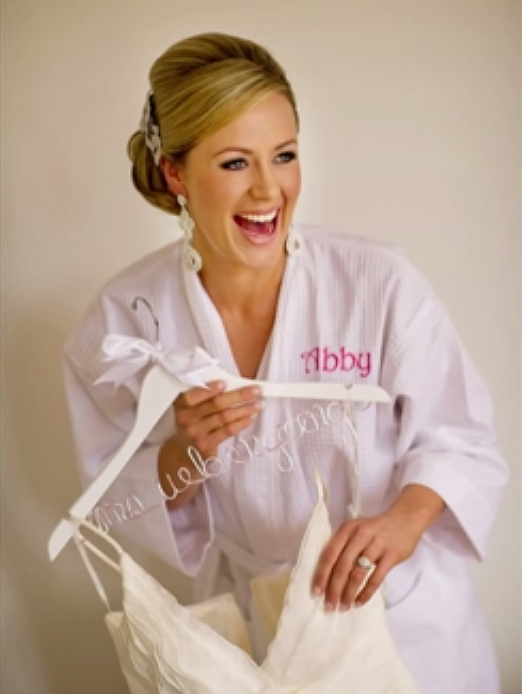
Start with a perfect pose and then evoke emotion.
3. Speak softly and gently. If you do give verbal commands, give them quietly in a way that relaxes the bride and makes her feel soft and beautiful.
“Sometimes your energy with what you say could just ruin the actual pose,” Ghionis said. “The way you say it can evoke the emotion… [speaking softly] makes her look and feel beautiful, therefore the energy is maintained and that’s the spark we need.”
4. Encourage her. Praise her using words like “beautiful,” “lovely,” “gorgeous,” and “stunning.”
5. Understand the female form. Use flattering poses and lighting that emphasize the bride’s curves without making her look bigger. If you can bend it, then bend it, but keep it soft and relaxed. Repeating curves are wonderful to the eye.
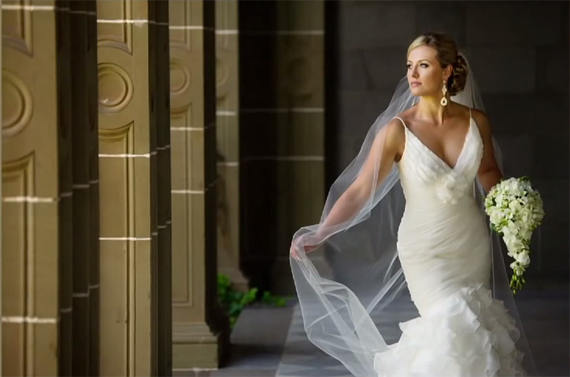
Ghionis describes this pose in detail from 13:08 – 24:00 in the video.
6. Keep her hands soft and relaxed. Use them to frame her body, her face, or some detail like her ring or her bouquet. Always look for those feminine curves.
“[Hands] can add so much elegance to an image,” Ghionis said. “After the eyes, the hands are the most expressive… I want you to tell a story with those hands.”
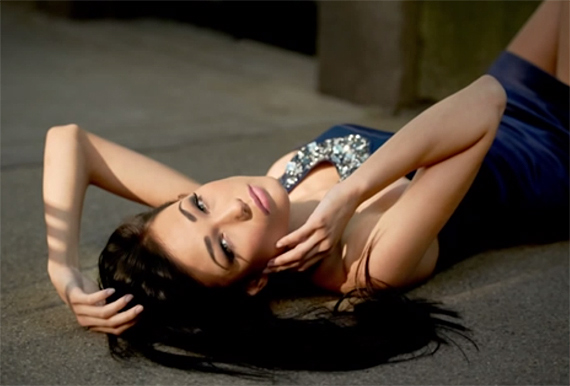
Hands can beautifully frame a woman’s face.
7. See the beauty in plus size brides. Learn to see the bride through the eyes of the groom and get to know her personality before you shoot. Then, amplify that beauty and hide weaknesses.
“Look at the bride through the eyes of the groom,” Ghionis said. “Your energy and the way you treat people and the love you have within yourself and for other people can actually make you shoot a certain way… never give a bride permission to feel bad about herself.”
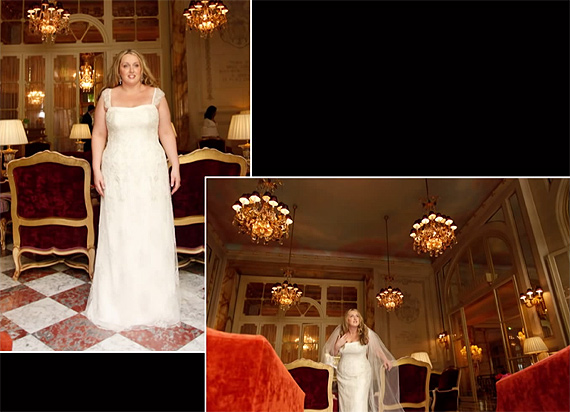
The top left photograph is a candid shot. The bottom left is posed.
Posing Grooms / Men
In the excitement of photographing a beautiful bride, it can sometimes be easy to understate the importance of posing her groom. In actuality, posing a groom requires just as much careful attention as photographing a bride—and it’s all about making him look and feel cool.
1. Be confident, use the mirroring technique, and encourage him. Confidence in a professional photographer is important for guys too. If you can get a groom to trust you, he will follow your lead, especially if you use the mirroring technique with him for posing.
2. Understand the male form. While curves define women, the chest and shoulders define men. A groom should be posed in a way that makes him look strong. Emphasize his chest and shoulders by leaning them towards the camera and de-emphasize his waist by leaning it away from the camera—and use straight lines wherever possible.
3. Know how to button his jacket. If his jacket has one button, always button it. If his jacket has two buttons, only button the top. If his jacket has three buttons, definitely button the top, never button the bottom, and decide on a case by case basis about the middle button.

“You build a temple for a king [and] it’ll be straight. Big strong straight lines, as tall as possible,” said Ghionis.
Posing Couples
Photographing a couple is all about finding poses that suit the relationship and balancing the beauty of those poses with the natural energy between the couple to achieve both perfection and emotion.
1. Use the phone number technique. Just changing one tiny element in a pose (like changing one number of a phone number) can change a pose drastically and give you endless posing possibilities.
“We instinctively go to the same safe poses every single time and think there’s only way to do it,” said Ghionis. “If you run out of poses, simply change a “digit”—change perspective, change lens choice, turn them around.”
2. Pretend that the couple is standing on a turntable. Don’t overlook the value of different perspectives. Ask the couple often to change angles or move yourself.
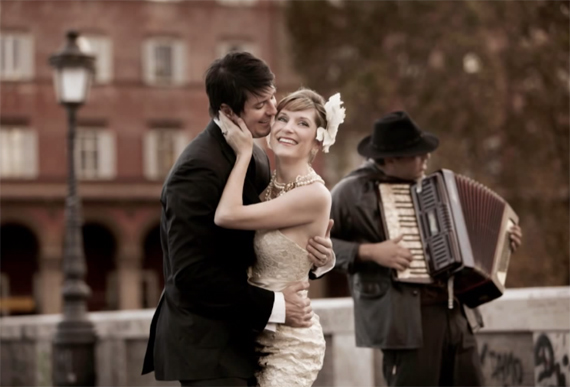
Know the story you want to tell with each shot.
3. Use clear, conscious directions. Vague directions like “turn right” are ineffective because to whose right is the couple supposed to turn—her right or his right or the photographer’s? Instead, get specific with your commands. Say, “Face me,” or “Face that building” or “Look over there at the top of that tree.” Instead of saying, “Kiss her,” say, “Kiss her like you’ve never kissed her before.”
4. Build and renovate. “Building” means allowing the couple to organically create their own pose by interacting with each other, with perhaps only a slight nudge from the photographer. “Renovating” is tweaking that organic pose so that it looks its best. The trick is knowing when to renovate the pose or tear it down and rebuild.
“Trust the couple. Give them a bit of space, like let them go for a little bit,” said Ghionis. “You’ll know very quickly if they’re one of those really graceful, beautiful couples who effortlessly are incredible, which is very rare, or if they’re one of those couples that need a bit of direction, or if they’re one of those couples who are incredibly awkward where you have to direct every little finger.”
5. Shoot for emotion and perfection, but allow imperfection if the emotion is there. The ideal situation would be to create the pose and then evoke the emotion needed for the shot to seem real, but many times, evoking emotion creates imperfection in the pose—and that’s okay.
“When they’re so interactive and passionate and beautiful, somehow you can sacrifice the perfection for the emotion,” Ghionis said. “Get in there, create something, get the emotion, and you know what happens? That slight break of perfection makes it look real.”
6. Shift the energy toward the bride. Lean the groom into the bride, tilt his head toward her, bend his leg slightly toward her. Do whatever it takes to create energy and lead the viewer’s eye to the bride. Remember that every body part communicates something about a photograph—make sure each one tells the right story.
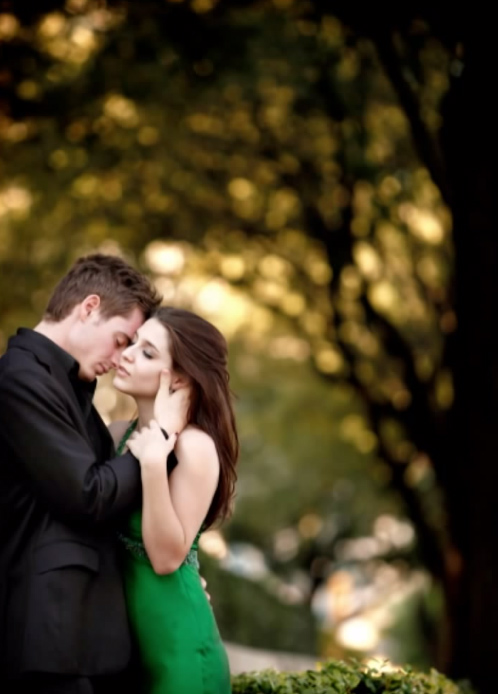
The groom’s posture here leads the viewer’s eye to the bride.
7. Know how to solve the tall & short dilemma. Ghionis provides a number of posing solutions to this problem, but he also reminds us never to undervalue resourcefulness or forget that we can simply tilt the camera to make the shorter partner appear taller and the taller partner appear shorter. “It’s just problem solving,” Ghionis said.
8. Know where to position their hands. Just a simple shift of the hands can change a photograph’s message from “I don’t care about you,” to “I love you.” Use hand-held props sparingly.
9. Complete the jigsaw puzzle. Think of each partner like a jigsaw piece in a puzzle and fit them together. See how many combinations you can come up with.
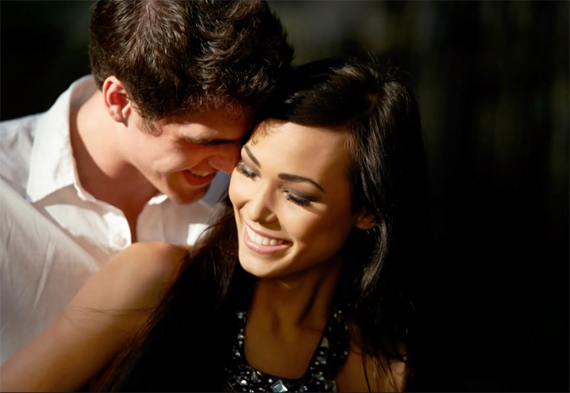
If one partner’s face must be in shadow, make it the groom’s face.
Posing Groups
Many photographers experience anxiety about photographing larger groups of people, such as bridal parties or families, and rightly so—group shots are keen at exposing inexperience. Ghionis’ recipe for curbing that anxiety is thinking about posing a group one person at a time.
1. Pose the anchor(s) first. The anchor is the most important aspect of the photograph. Pose the anchor—or in the case of a full bridal party photograph—the anchors first. Then add in the other individuals to the scene wherever it makes sense to lead the eye to the anchor(s).
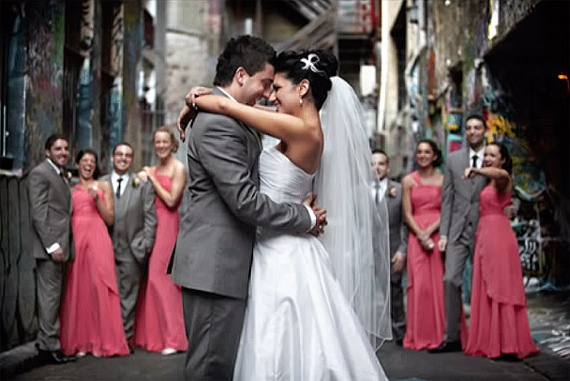
The bride and groom should be the anchor of a full bridal party shot.
2. Eat your vegetables. While photographing the bride and groom and even bridal parties is like eating candy, considering all of the space you have to play and create, photographing families is often treated like that grit-your-teeth-and-just-do-it practice of eating vegetables. Not so.
“Never discount these family shots,” said Ghionis. “The minute someone’s sick or passes away, this is what [they’ll] be looking at.”

“Family shots do not have to be boring,” Ghionis said.
Final Thoughts
Ghionis closes his lecture by recommending his invention called the Ice Light, a powerful lightsaber-shaped LED light designed to mimic the warmth of natural window light, but ultimately reminds his audience that gear, while essential, is not what makes a photographer.
“The gear is important to a certain extent, but ultimately, it’s what you do with it,” Ghionis said. “If you know your lighting, you know your posing, you know your story, [and] you know how to evoke your emotion, that’s very very powerful.”
Based in Beverly Hills, California and Melbourne, Australia, and having won numerous awards and honors, Jerry Ghionis is truly a master of his craft. He travels internationally to shoot weddings, fashion, and portraits, and is known for his empathetic shooting style and his knack for making his subjects look and feel beautiful in his work.
Like This Article?
Don't Miss The Next One!
Join over 100,000 photographers of all experience levels who receive our free photography tips and articles to stay current:




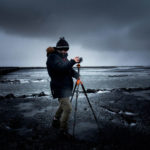

Brilliant.
Early on in my career I too learned that clients want to be told what to do,
even professional models want guidelines, so a novice needs them even more.
Some tips I agree with, but I do not think that is the photographer responsibility to button the groom’s jacket.
when was this written? there’s no date on it. that’s bad, because i need to know how relevent- how current- things are that are mentioned in the embedded video